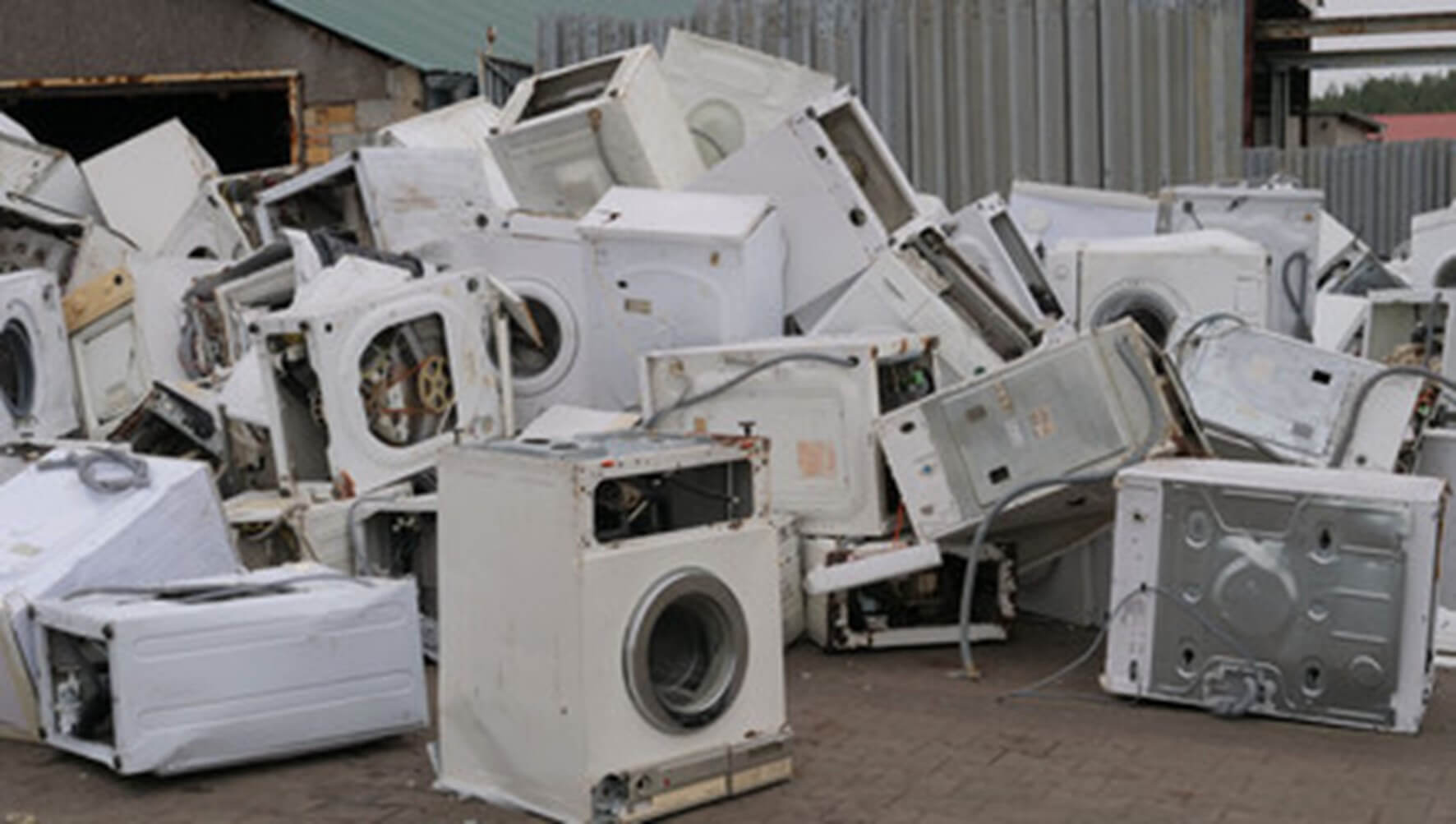Second-hand domestic appliances can appeal to the budget-conscious, environmentally-minded, or bargain lovers alike. Facebook Marketplace, Gumtree and eBay, all offer inexpensive used appliances; however, these appliances come with no guarantees and no certainty over the provenance of the appliance.
Having investigated numerous domestic appliance fires and examined countless tumble dryers, I was interested in what £10 would buy you in a second-hand domestic appliance. I decided upon the following appliance:
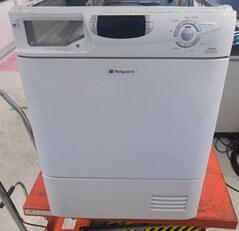
First and foremost, being aware of the 2015 Hotpoint/Indesit tumble dryer recall, I checked the appliance on their website and found it to be covered by the recall; this appliance was at an increased risk of fire. The guidance from Hotpoint is to unplug the dryer and not use it.
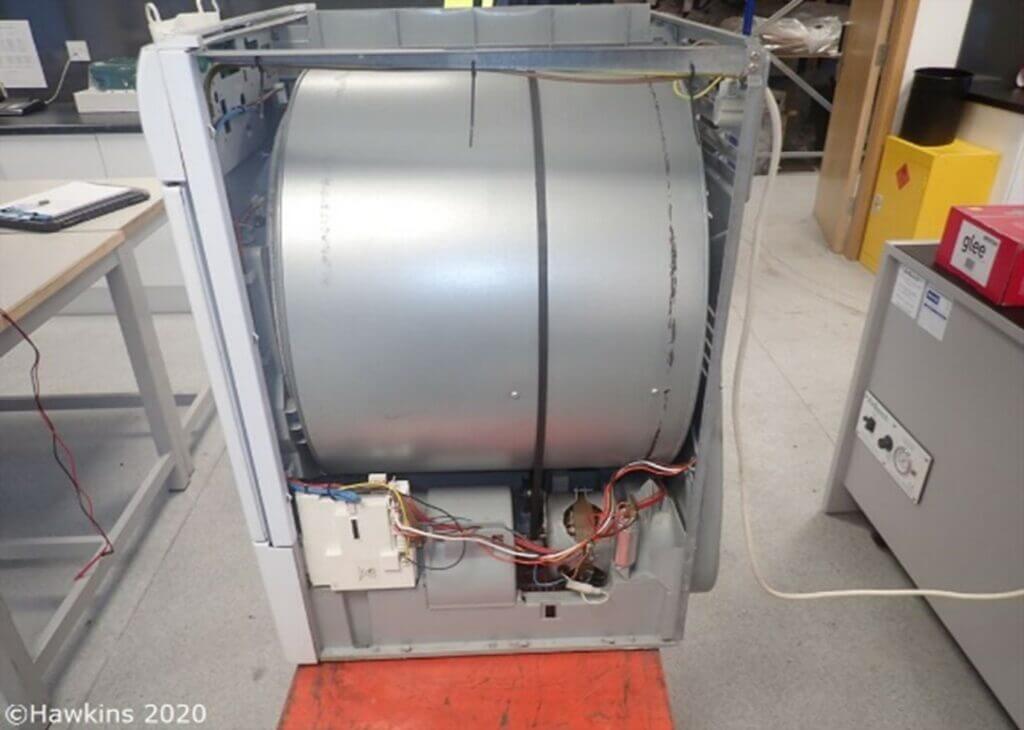
I did not know the history of the appliance, as the seller was the owner of a house clearance company and sold items of value from the clearances. I undertook an inspection and testing of the appliance in the Hawkins’ laboratory facilities. When I plugged it in and switched it on, the LCD screen flashed but did not remain illuminated. When I pressed ‘start,’ the drum rotated for a couple of seconds before ‘tripping’ the Residual Current Breaker with Over-Current (RCBO). An RCBO is a combined residual-current device (RCD) and circuit breaker for the sockets. I reset the RCBO and tested the appliance again, with the same result.
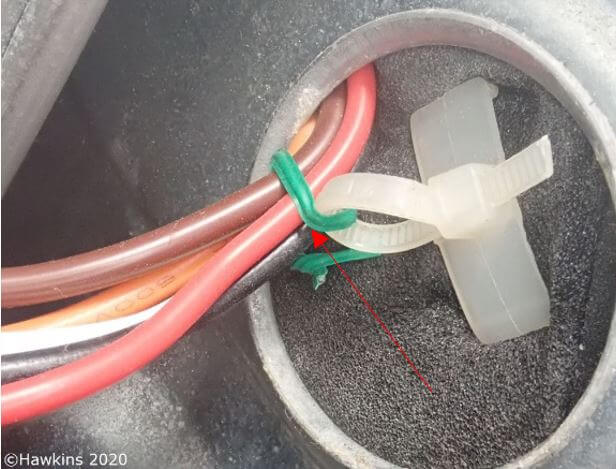
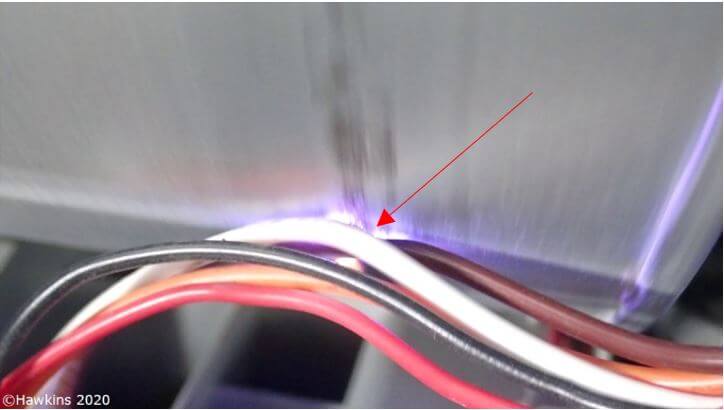
Taking the side panel off, it was apparent that some of the parts were not original, and that the tumble dryer had undergone a repair. It appeared that the heater element and associated supply cables had been replaced, but whoever did this had not replaced the cable ties securing the cables. The main power supply cables to the heater elements were not routed through the casing mounted cable tie but, were instead attached to this cable tie with a green twist tie. As a result, the cables were not routed correctly and were left resting against the rotating drum.
Due to the incorrect routing of the main power supply cable to the heater elements, the cable insulation had worn against the drum when the dryer was in use. Over time, this abrading of the cable insulation had exposed the live conductors, allowing them to arc against the drum. Several markings on the drum show that the cable had been arcing for some time before I purchased it, as each mark was evidence of a separate arcing event.
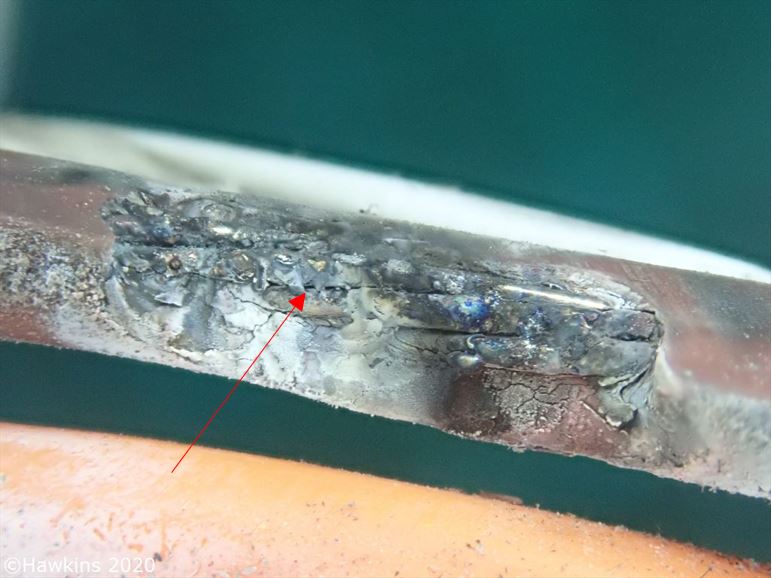
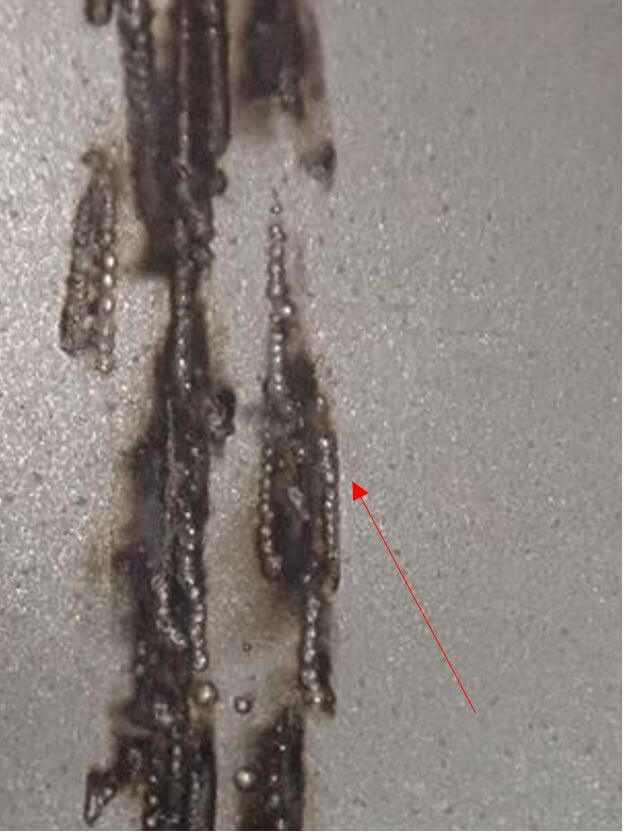
Whilst the fault has not manifested itself in a fire, the number of markings on the drum suggested that the circuit protection of the building where the appliance had been located was much less sensitive than an RCBO or RCD and was not sensitive enough to isolate the tumble dryer when the arcing occurred. This means that this wear could have, continued to a point at which an incendive failure occurred.
About the Author
Since joining Hawkins in 2016, Jon has investigated over 400 fire and explosion incidents. He has led investigations of a domestic, industrial and commercial nature, which have ranged in size from small losses to multi-million-pound complex claims.
Jon is experienced in the legal process in both Scotland and England & Wales, and the preparation of CPR Part 35 compliant reports. He has experience advising solicitors and Counsel and has given expert evidence in the All-Scotland Sheriff Personal Injury Court, a Fatal Accident Inquiry, and in the County Court of Northern Ireland.
Jon is also an A2 Certificate of Competence (A2CofC) certified drone pilot and can assist clients with aerial surveys on cases relating to fires, structural failures, and personal injuries. The use of drones in an investigation can be particularly beneficial to inspect dangerous or hard to reach areas. He is Regional Manager of our Glasgow and Belfast offices.
